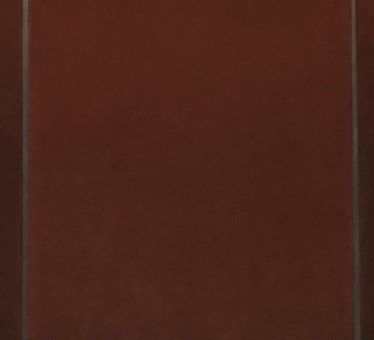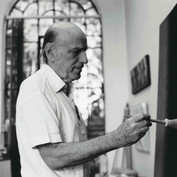Arcangelo Ianelli

São Paulo, Brazil, 1922 —
São Paulo, Brazil, 2009
Arcangelo Ianelli made abstraction an opportunity to challenge limits, embodying a work that is placed in a prolonged search for the indispensable.
At first figurative, Ianelli’s work began to transition to abstractionism in the late 1950s, a process witnessed in several works, such as Arvoredo and Casas (both from 1960), in which the figures receive extreme formal synthesis and are constructed geometrically . This is just the first moment of an extensive and fruitful exploration of the possibilities of abstraction, which is intensified in a work such as Três Forms (1963), in which the artist paints three irregular rectangles in low tones on a dark background, working with the aspects painting materials. This trend deepens even more in the series Grafismos, in which Ianelli thickens the canvases with incisions drawn on the background, giving the pictorial plane a tactile aspect that resembles the rough consistency of the rocks, as in the Autumn in Paris canvas (1967).
In the 70s, Ianelli’s work approaches concretism when his compositions take geometry as their object. Here, geometric shapes, by virtue of their repetition and regular alternation, produce optical effects of movement that agitate them in a ballet performed on the plane, as in Encontro e Desencontro (1973). Ianelli also experiments with geometry through Transparencies, when, using tempera, he calls the diaphanous and luminous colors, in the slight overlap of squares and rectangles. From then on, light gains a predominant place in Ianelli’s work, so that in the 1980s the contours are abandoned, giving way to fields of color whose vibration expands towards the limits of the plane, as if they could be extrapolated to space. . The light does not seem to originate from the outside, but to emanate from the core of the painting, amplifying itself on the pictorial plane and communicating to the succession of colors the same expansive movement delivered to a powerful vibrating effect, as is noticeable in Nº4 (1991) and Black and Gray (1995).
By reaching compositions that are sufficient in colors and light, Ianelli achieves the essential, not only in the sense of being what is enough, but of referring to a certain mysterious essence. Perhaps we can understand his abstract canvases as the elementary soil and the diaphanous sky that mark the ends of the field open to the creative gesture.
VRP
Exhibition "Line, Color and Movement"
We present Line, Color and Movement. Dan Galeria's new online collection exhibition.
